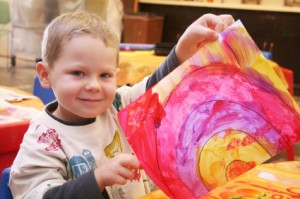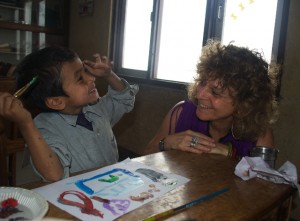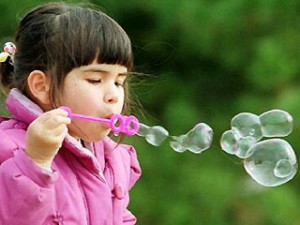Art Activities in Speech-Language Therapy
There are two main styles of speech therapy: directive and naturalistic. A directive approach is more structured. The speech therapist might hold up an object, name it, and prompt the child to repeat the word. In contrast, the naturalistic approach may simply look like play. It’s less structured, and it often involves arts and crafts activities. Finding ways to fit art activities in Speech-Language Therapy is a rewarding exercise, and certainly worth considering.
Art activities in speech-language therapy are helpful for working on your child’s receptive and expressive language skills. Receptive language skills refer to your child’s ability to comprehend language. Your child can’t follow directions if he doesn’t understand them. For example, the speech therapist may ask him to draw a picture with a red crayon. The therapist might hold up the red crayon while he says this. In this manner, your child learns the color red, and he also learns to follow simple directions by taking the red crayon and drawing a picture.
Expressive language skills refer to your child’s ability to put words together and communicate effectively. One example of an arts and crafts activity that a speech therapist might use is the classic macaroni project. The therapist will direct the child to glue dry macaroni pieces onto a piece of paper or other object. While the child does so, he will be prompted to repeat what he is doing. For example, he will say, “I am putting glue on the macaroni… I am putting the macaroni on the paper.” This activity works on the child’s pronunciation skills as well as his ability to understand the directions, follow them, and repeat them.
Children who haven’t yet advanced to saying more difficult words like “macaroni” will benefit from simpler arts and crafts activities that allow them to work on individual sounds. The speech therapist might have your child blow bubbles. He will then use the opportunity to encourage your child to say “pop.” The bubble blowing game has a two-fold purpose. Not only does it help your child with the “p” sound, it also helps your child learn to build oral air pressure. This is helpful for children who have trouble pronouncing consonants.
Arts and crafts activities can help your child enjoy speech therapy and learn new skills in a relaxed environment. He’ll be encouraged to “use his words” to request specific paints or crayons for his pictures. Your child can also be encouraged to talk about his art project. For example, instead of asking him if he painted a picture, the speech therapist can elicit more words by asking him what he painted and which colors he used.





